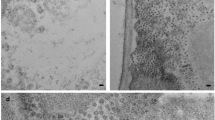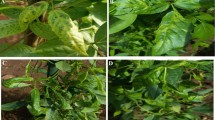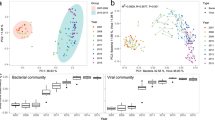Abstract
AN analogy has frequently been drawn between the production of bacterial colonies on artificial media and of primary lesions on the leaves of susceptible host plants inoculated with an extract of virus-diseased tissues. In a recent paper, Youden, Beale and Guthrie1 have carried this analogy one step further, and have suggested that the relation between the numbers of lesions and the relative concentrations of virus particles in the inoculum may be described in the same way as the relation between the numbers of bacterial colonies and the concentration of bacteria in the plated suspension. Their equation takes the form: where y is the number of lesions given at any concentration x of the virus, N represents the maximum lesions obtainable, and a is a constant.
This is a preview of subscription content, access via your institution
Access options
Subscribe to this journal
Receive 51 print issues and online access
$199.00 per year
only $3.90 per issue
Buy this article
- Purchase on SpringerLink
- Instant access to full article PDF
Prices may be subject to local taxes which are calculated during checkout
Similar content being viewed by others
References
Youden, Beale and Guthrie, Contrib. Boyce Thomson Inst., 7, 37; 1935.
Samuel and Bald, Ann. Appl. Biol., 20, 70; 1933.
Author information
Authors and Affiliations
Rights and permissions
About this article
Cite this article
BALD, J. Statistical Aspect of the Production of Primary Lesions by Plant Viruses. Nature 135, 996 (1935). https://doi.org/10.1038/135996a0
Published:
Issue date:
DOI: https://doi.org/10.1038/135996a0
This article is cited by
-
Isolation and properties of virus proteins
Ergebnisse der Physiologie Biologischen Chemie und Experimentellen Pharmakologie (1937)



